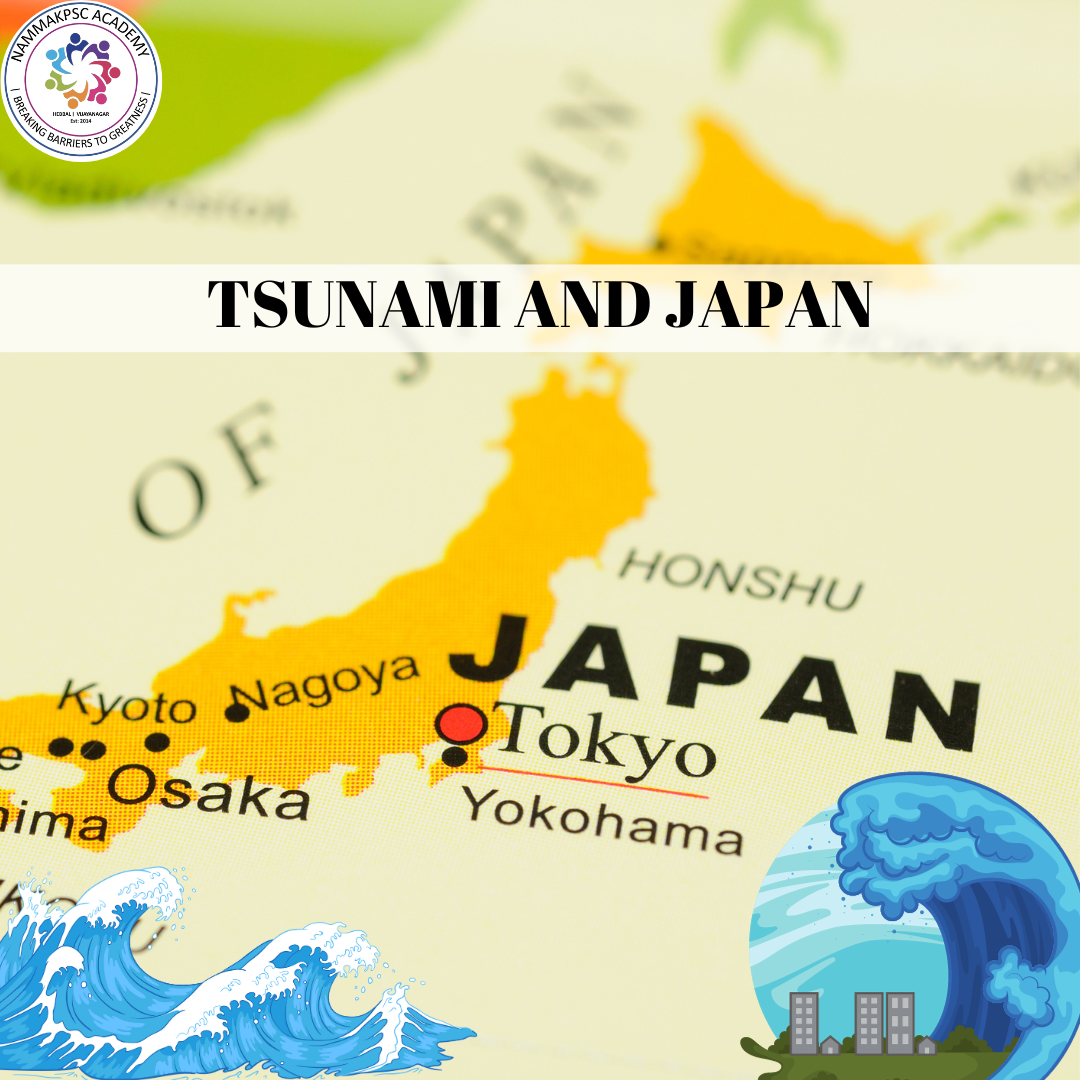Published on: January 2, 2024

TSUNAMI AND JAPAN
TSUNAMI AND JAPAN

CONTEXT – Tsunami waves hit several parts of Japan’s coastal areas and urgent evacuation warnings were issued after a 7.6-magnitude earthquake shook the country’s north-central region
WHAT IS A TSUNAMI?
- Tsunami (a Japanese word that means “harbour wave”) is a series of giant ocean waves caused by earthquakes or volcanic eruptions under the ocean
- When an earthquake takes place under the ocean, a large chunk of the ocean floor can suddenly move upward or downward, leading to a sudden displacement of a large volume of water, thereby causing tsunami waves
- A similar thing can happen when a volcano erupts in the ocean. The lava flowing out of the volcano displaces the water around it and that water can become a large wave
- Big tsunamis usually begin in the deep ocean, where a large volume of water can be displaced. As the wave moves closer to the shore, it grows taller as the ocean becomes shallower
- Tsunami waves can be hundreds of feet tall and can travel as fast as jet planes over deep waters while slowing down when reaching shallow waters.
- However, not all earthquakes or volcanic eruptions lead to tsunamis. The formation of a tsunami can depend on a host of factors, including the shape of the ocean floor, and the earthquake’s distance and direction
WHY IS JAPAN PRONE TO EARTHQUAKES AND TSUNAMIS
Japan is prone to earthquakes and tsunamis due to its location along the Pacific Ring of Fire, which is an area with a high level of tectonic activity. Several geological factors contribute to the seismic and tsunami risks in Japan:
- Tectonic Plate Boundaries: Japan is situated at the convergence of four major tectonic plates: the Pacific Plate, Philippine Sea Plate, Eurasian Plate, and North American Plate. The interactions between these plates create intense seismic activity.
- Subduction Zones: The Pacific Plate is subducting beneath the North American Plate along the Japan Trench to the east of Japan. Subduction zones are known for generating powerful megathrust earthquakes and tsunamis. The movement of tectonic plates at subduction zones is a primary cause of seismic activity in Japan.
- Ring of Fire: Japan is part of the Pacific Ring of Fire, a horseshoe-shaped region around the Pacific Ocean characterized by frequent earthquakes and volcanic activity. This area is prone to plate tectonics-related events, including earthquakes and volcanic eruptions.
- Deep Ocean Trenches: The Japan Trench, a deep oceanic trench to the east of Japan, is a subduction zone where the Pacific Plate is forced beneath the North American Plate. This creates the potential for large undersea earthquakes that can trigger tsunamis.
- Volcanic Activity: Japan has numerous active volcanoes, contributing to the geological activity of the region. While volcanic eruptions themselves do not cause tsunamis, they can influence the local landscape and contribute to earthquake activity.
- Complex Fault Systems: Japan has a complex network of active fault systems, both onshore and offshore. The interaction of these faults, combined with the movement of tectonic plates, leads to frequent seismic events.
- Shallow Earthquakes: The earthquakes in Japan often occur at shallow depths, making them more likely to cause significant ground shaking and potential damage to structures.
- High Population Density and Urbanization: Japan’s high population density and extensive urbanization increase the vulnerability to earthquake impacts. The country has invested significantly in earthquake-resistant infrastructure, but the potential for damage remains due to the magnitude and frequency of seismic events.

